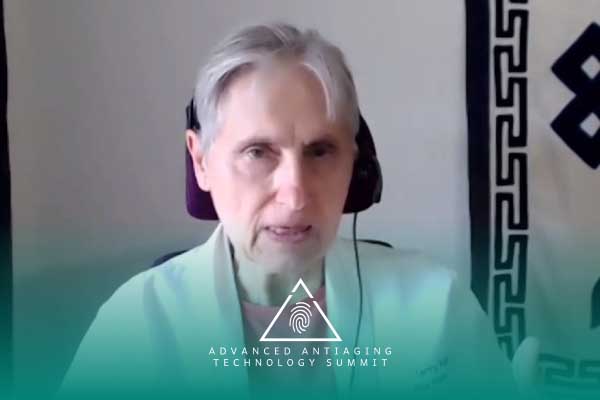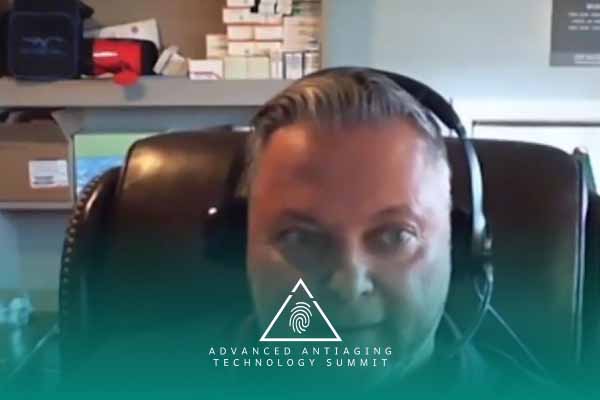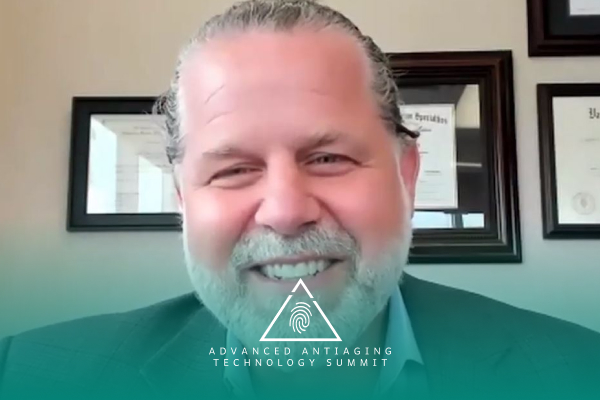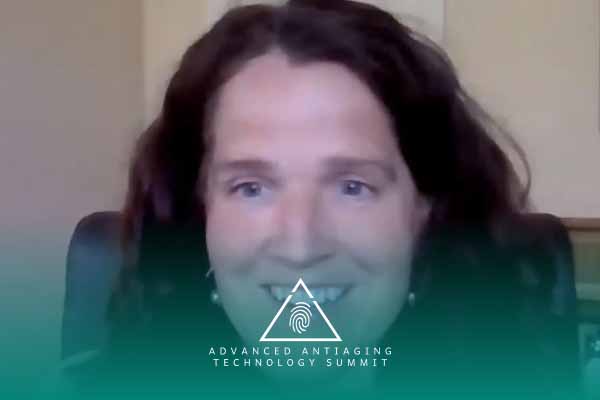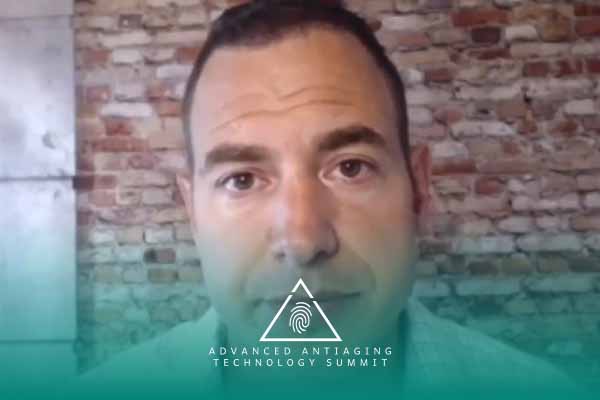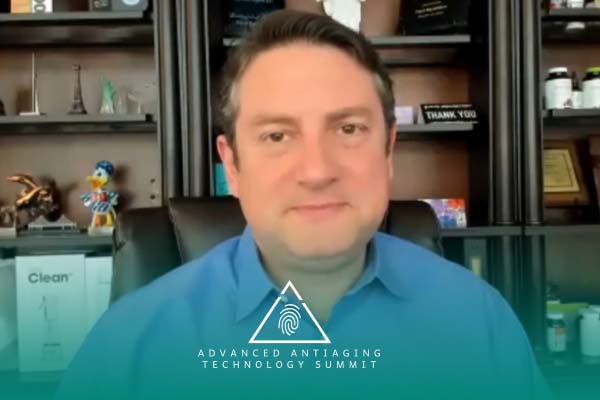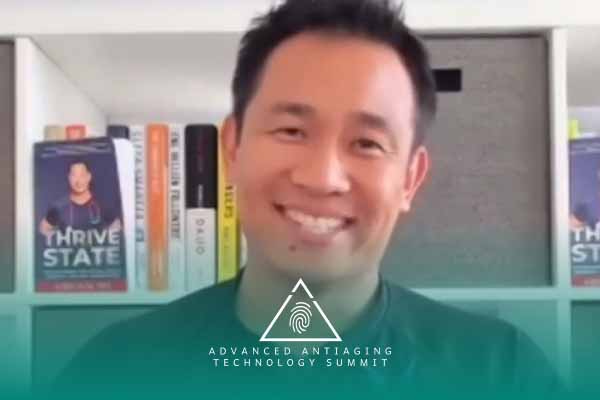Join the discussion below
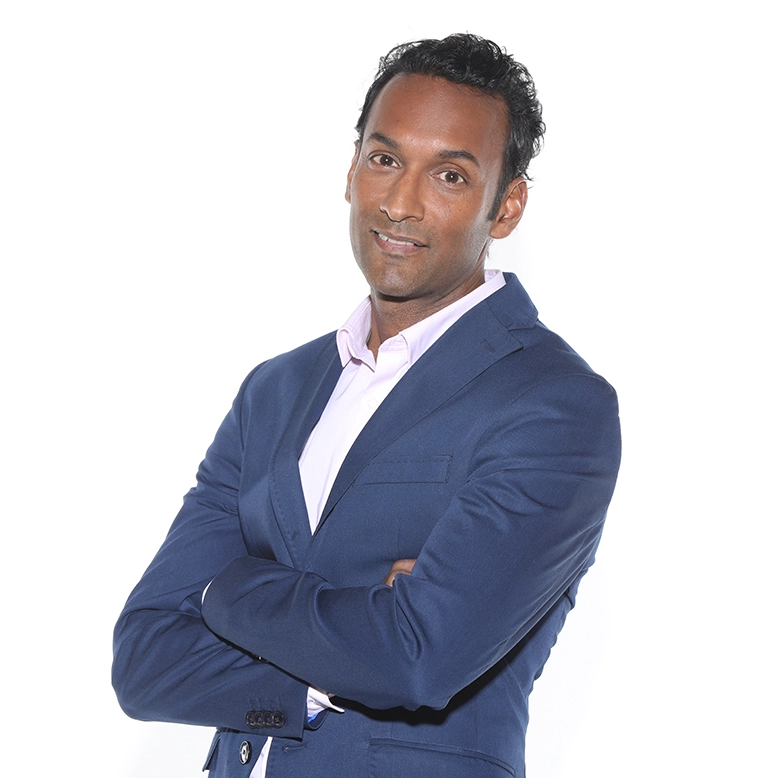
Dr. Goel is a medical physician and founder of Peak Human Labs. His mission is to speak knowledge of the latest cutting edge medical tools and science in order more people to live in a Peak mental, physical and spiritual state. You can learn more about his work at longevity.peakhuman.ca. Read More
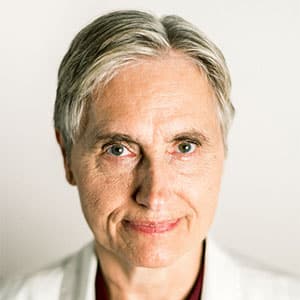
Dr. Terry Wahls is an Institute for Functional Medicine Certified Practitioner and a board-certified internal medicine physician. She also conducts clinical trials testing the efficacy of diet and lifestyle in the setting of multiple sclerosis. In 2018 she was awarded the Institute for Functional Medicine’s Linus Pauling Award for her... Read More
Dr. Terry Wahls emphasizes the importance of dietary choices in improving one’s health and well-being. She recommends cutting out processed foods and added sugars while increasing vegetable consumption. Dr. Wahls highlights the significant impact of diet and lifestyle on overall health and encourages viewers to explore her website, terrywahls.com, for more information.
Sanjeev Goel, MD, FCFP (PC), CAFCI
Hi, everyone. I’m Dr. Sanjeev Goel, and today we have Dr. Terry Wahls, and you’re listening to the Advanced Antiaging and Technology Summit. Welcome, Dr. Wahls. How are you?
Terry Wahls. M.D.
Excellent. Glad to be here.
Sanjeev Goel, MD, FCFP (PC), CAFCI
Thank you. Thank you so much for your time today. I’m just gonna take our listeners on a little bit of a, learn a little bit about your background with your bio. So if you can just bear with me as I just read it. Dr. Wahls is an Institute of Functional Medicine certified practitioner and clinical professor of medicine at the University of Iowa, where she conducts clinical trials. In 2018, she was awarded the Institute of Functional Medicine’s Linus Pauling’s Award for contributions in research, clinical care, and patient advocacy. She is also a patient with secondary progressive MS, which confined her to a tilt recline wheelchair for four years. Dr. Wahls restored her health using a diet and lifestyle program she designed specifically for her brain and now pedals her bike to work each day.
She’s also the author of the Wahls Protocol, a radical new way to treat all chronic autoimmune conditions using paleo principles. Learn more about her MS clinical trials by reaching out to her team. Maybe we’ll put that in the notes for the viewers. Pick up copies of her research papers at terrywahls.com/researchpapers/, and a one page handout for the Wahls diet at terrywahls.com/diet. So, yeah. Thank you, again, so much for taking the time today. So maybe just take me a little bit of a journey to understand your MS journey to understand your MS journey and your pain due to trigeminal neuralgia. Tell me the story about that. So our viewers can understand.
Terry Wahls. M.D.
Yeah, sure. So 40 years ago during medical school, I started having episodes of pain at my temple. They would gradually become more troublesome, more severe. 20 years ago, I developed weakness of my left leg and was evaluated. Saw a neurologist, and he said, Dr. Terry, this could be bad or really, really bad. I went through a big work up, and he diagnosed me. Did an MRI, spinal tap, and was diagnosed with relapsing remitting MS. Now I saw the best people, took the newest drugs, and within three years, my disease had converted to secondary progressive multiple sclerosis. At that point, there’s no more similar case improvements. You anticipate gradual, relentless decline.
I took mitoxantrone infusions. I took Tysabri infusions. I took CellCept. None of that helped. I continued my relentless decline. I was too weak to sit up, even in a regular chair. I could walk very short distances, using two canes. I had a severe trigeminal neuralgia. I was beginning to have brain fog, but I’d been reading the basic science, ancestral health. Functional medicine. I designed a diet and lifestyle program specifically for my brain and my mitochondria to slow my decline, because I knew recovery was not possible, but to my amazement, my pain stopped. My brain fog resolved. My fatigue resolved, and I was getting stronger. I was able to sit up. I was able to walk again, and one year later, I am biking my bike. and one year later, I am biking my bike. In fact, I’m able to do an 18.5 mile bike ride. This radically changes how I think about disease and health. It changes the way I practice medicine, and it radically changes the type of research that I do.
Sanjeev Goel, MD, FCFP (PC), CAFCI
Wow. So, yeah. I’m pretty excited, very excited, and definitely interested to understand how could you do this thing? Cause from medical school when I remember is that we used to think that these things were permanent, like these were permanent lesions in the brain that caused MS so.
Terry Wahls. M.D.
And every neurologist that I saw, and I saw quite a few in my journey, they always told me functions once lost once you have secondary progressive MS, never come back, and so, my recovery was quite stunning. and so, my recovery was quite stunning.
Sanjeev Goel, MD, FCFP (PC), CAFCI
Yes, it is. Just hearing, that’s very stunning, and I need to ask more questions to understand what, okay, so what is it about the diet and lifestyle part that you designed for yourself that that caused your recovery?
Terry Wahls. M.D.
I focused on the microenvironment for the cells. In the treatment for autoimmune conditions, including multiple sclerosis, they focus on the inflammation, and so there are now very good drugs at turning off inflammation and reducing the number of enhancing lesions, but they’re not very good at repairing the brain. They’re not very good at repairing myelin. They’re not very good at stopping the rapid atrophy of the brain. My brilliant to how was I needed to focus on cellular nutrition, on the microenvironment of the cells, of correcting as many of the pathways that I could, of correcting as many of the pathways that I could, and that was going to be, at first I focused on supplements, and supplements didn’t really do much for me.
They slowed my decline, but they didn’t lead to recovery. It was when I focused on food, on diet, on lifestyle, and I did all of that, not to recover, because I knew recovery wasn’t possible with progressive MS. I did all of that to slow my decline, but to my amazement not only did I slow my decline, I was still getting stronger and stronger and recovering, and now we understand that I was changing gene expression. I was changing the microbiome. I was restoring hormonal balance. I was changing the cytokine profile through this comprehensive diet and lifestyle program.
Sanjeev Goel, MD, FCFP (PC), CAFCI
So, yeah. Just from your bio, can you tell me a little bit about the diet? I’m curious. It’s the paleo diet, or what does that…?
Terry Wahls. M.D.
Well interestingly enough, in my journey, I was two years into my diagnosis. I adopted the paleo diet after having been a vegetarian, a low-fat vegetarian, for the previous 15 years, and the paleo diet, I read one Loren Cordain’s work. I thought he made a good scientific case for it. So I made the change, but I still declined. The next year, I needed a wheelchair, and I’m taking mitoxantrone, Tysabri. I’m still declining every year. So the paleo diet was not enough. I was reading the basic science. I added supplements targeting my mitochondria, because I decide mitochondria are the big drivers of neurodegeneration, and that slowed my decline.
It reduced my fatigue but didn’t lead to recovery. When I went back and looked at my long list of nutrients that identified as important for the mitochondria and asked a very important question. Where are those nutrients in the food supply? And I went back to my paleo diets, said, okay. I’m going to stress these food groups and redesigned my diet based on creating the most maximally nutrient dense diet, and then when I changed my clinical practice, I realized I needed to come up with simple food rules to help my patients copy the way I was eating, and that was how I ended up creating the food rules that I teach in the Wahls Protocol.
Sanjeev Goel, MD, FCFP (PC), CAFCI
Right, in the Wahls Protocol. Right Okay. So this is very customized. It sounds like it’s customized, but could be then these can be generalized to another patient.
Terry Wahls. M.D.
Right. So I teach this in my clinic, and what I have is a stepwise process, and at first, the most basic level, I ask people to eliminate added sugars, greatly reduce them, and I recommend they eliminate gluten containing grains. So that’s wheat, rye, barley, and I also ask them to eliminate dairy, because the dairy proteins or the gluten proteins cross-react, and for many people with a autoimmune condition, there is unrecognized gluten sensitivity, and then a third food item that can be problematic for many are egg proteins. So I have them take those three food groups out, and we ask them to eat many more vegetables in the green leafy vegetables.
So lettuces, spinach, kale, parsley, cilantro, So lettuces, spinach, kale, parsley, cilantro, and then in the cabbage, onion, mushroom families, and then deeply pigmented things like beets, carrots, berries, peppers, and then I ask about what are your sources of proteins? And we discern or clarify And we discern or clarify is someone a vegetarian for their spiritual beliefs or are they open to eating meat? And I have a separate plan for the vegetarian and a separate plan for the meat eaters, and so that’s a level one, and my first line of diet people can do as a vegetarian or as a meat eater, according to their preferences.
Sanjeev Goel, MD, FCFP (PC), CAFCI
Yeah. I’m just curious, cause I’m a vegan myself. So just can tell me what is it that the protein source looks like in a vegan that would be anti inflammatory or?
Terry Wahls. M.D.
Oh, so for those individuals, some people implement the vegan and vegetarian diet, and don’t bother to educate themselves about how to make sure they’re getting sufficient protein. So we make sure they know to combine the legumes and a gluten-free grain, because in the VA I would take care of many folks who are vegetarian. Pardon me. Many folks who are disabled living on food stamps. We would also teach legumes and gluten-free grains as a way to make all of this more affordable.
Sanjeev Goel, MD, FCFP (PC), CAFCI
Right.
Terry Wahls. M.D.
It is shocking how many folks have chosen to be vegetarian or vegan for their spiritual beliefs, but never learned how to design a diet based on vegetables but never learned how to design a diet based on vegetables or to make sure they’re having sufficient protein. That they’re still eating a lot of junk food, but they’re not eating any meat or animal products, but there’s still having a diet that’s very unhealthy for them.
Sanjeev Goel, MD, FCFP (PC), CAFCI
Right.
Terry Wahls. M.D.
And we had many folks were meat eaters who are eating a diet that’s still very, very, very unhealthy for them. So they’re eating meat and a lot of processed sugars. Pastas, white breads, white potatoes, and no vegetables. Pastas, white breads, white potatoes, and no vegetables. So there’s an opportunity for a lot of diet education that needs to happen in my clinics.
Sanjeev Goel, MD, FCFP (PC), CAFCI
It sounds like the type of diet you’re recommending is one that most people are coming around. That this is exactly what people should be doing in general, right? Like whether or not you have any type of illness or not.
Terry Wahls. M.D.
So if you want to have healthy aging, you really want to have a nutrient dense diet. You want to know how to maximize your vitamins, your minerals, your antioxidants, your essential fats, and unfortunately, unfortunately many no longer know how to cook. They don’t know how to meal plan. They don’t know how to make a shopping list. They don’t know how to design a diet that gives their cells the best microenvironment, and the result is that if we’re deficient in nutrients, we’re going to enter a disease state. Likewise, if we’re excess in some nutrients, that can also lead us to a disease state as well, and so having a diet that provides all of those necessary components it’s really foundational to healthy aging.
Sanjeev Goel, MD, FCFP (PC), CAFCI
Yeah. You were mentioning about the mitochondria. So is there some specific nutrients that the mitochondria needs, like can you give me some?
Terry Wahls. M.D.
Yeah. So if you think back to biology, which you probably took in ninth grade, and you can sort of look back in your mind. There are these little ovular organelles There are these little ovular organelles with little squiggles in the middle. And all of those squiggles are the cell membranes. It’s so the mitochondria generate our energy, adenosine triphosphate, ATP, and all of those reactions take place in the membranes. So mitochondria need a lot of essential fats to have healthy membranes.
They also need B vitamins. They’re going to need minerals. Zinc, magnesium in particular. Selenium as well, and they’ll need some antioxidants, and our mitochondria are poisoned by heavy metals like lead, mercury, cadmium. Pesticides, and furthermore, Pesticides, and furthermore, our mitochondria are really ancient bacteria that were engulfed by bigger bacteria several billion years ago. That then would eventually become the power plants of all of our cells, and so when we take antibiotics to fight off those infections, if we’re taking those antibiotics for a long time, that can lead to some strain for a mitochondria.
Sanjeev Goel, MD, FCFP (PC), CAFCI
That’s interesting. You mentioned about the cell membrane, and so I’ve seen the, some supplements like phosphatidylcholine, phosphatidylserine, and all this. Do you think these are valuable?
Terry Wahls. M.D.
Phosphatidylethanolamine? They can be really very helpful, and likewise, you and I, we cannot make and likewise, you and I, we cannot make omega-3 fatty acids. We cannot make omega-6 fatty acids. We must consume them in our food, and so it’s just critical that we have at least omega-3 and omega-6 fatty acids. We could make other phospholipids as long as we have those two compounds, but if the person’s diet is low in these essential fatty acids, that’s gonna create problems with your cell membranes. It’ll make problems for your brain. It’ll make problems for your mitochondria.
Sanjeev Goel, MD, FCFP (PC), CAFCI
What do you think about, I mean, fish intake and concern about heavy metals? You know, obviously there’s a important DHA and EPA in fish.
Terry Wahls. M.D.
I think we have to be concerned about the quality of our foods, certainly all of our food, and so if we’re having fish, you want to have fish that’s lower down on the food chain. Fish that is higher on the food chain is gonna have more concentration of whatever whatever has polluted the fisheries. So a shark, very contaminated. Tuna, also contaminated. So a shark, very contaminated. Tuna, also contaminated. Sword fish may be contaminated. Herring, salmon are lower down in the food chain. Much less contamination. Sardines, lower down the food chain, less contamination.
Sanjeev Goel, MD, FCFP (PC), CAFCI
Okay. Makes sense. I guess we can’t get away from complete, we can’t have anything completely safe in this world.
Terry Wahls. M.D.
Well, it’s difficult to have anything that’s completely safe. I want people to have the highest quality food that they can realistically afford within their family’s financial means, and so if you can afford organic, wild caught, grass fed, grass finished meats, that is ideal. However, I do want to acknowledge that in my clinics at the VA, I took care of people living on disability, on food stamps, and we taught them the principles of the diet that we use, and they were getting their food, conventional food, in small grocery towns, grocery stores, in rural Iowa, rural Missouri, and Illinois, and they still experienced remarkable health transformations.
Could they have gotten those transformations sooner if they’d been able to have only organic food? Yeah, probably, but I want your listeners to know that yes it’s ideal to buy organic, but if that’s not what your family can afford, just do the best that you can. We would have them go to the Environmental Working Group and download the Clean Fifteen and the Dirty Dozen and prioritize. We would teach them how to grow their own food, and people would do what they could, and people would do what they could, and consistently, as they ate more vegetables, less junk food, their health steadily improved, and they look younger and younger and younger.
Typically by the time, within six months, the user looked five years younger, sometimes 10 years younger than they had when we first met them. So we started asking people to take photos of themselves at their first clinic. So they could document that, because they would, they could anticipate how much younger they could anticipate how much younger they were going to look.
Sanjeev Goel, MD, FCFP (PC), CAFCI
Wow. So what about something like fasting? So what about something like fasting? Have you seen any impact? What do you think the impacts of fasting are?
Terry Wahls. M.D.
So if you think about our evolutionary history, our ancient mothers and fathers were routinely fasting. They would have a lot of physical activity to go gather their food, whether it was for the long hunt or for long gathering process. Bring it back and prepare the food to have a re-feed that would last a couple of days. Food supply is depleted, and the cycle repeats itself, Food supply is depleted, and the cycle repeats itself, and then when we left Africa and we’re now in these zones where you have winter, we again have, or a drought or a famine, we again through periods where we don’t have food, or the food supply is restricted, and we were going through that natural absence of calories.
This is physiologic. This was normal. This was how our DNA evolved, and it makes us more robust, more resilient. When we have this period of restricted calories followed by a re-feed, it shifts a lot of our physiology into a repairing phase. It releases more stem cells, and so I reassure people this is health promoting. It’s antiaging, and so we talk about this in terms of time restricted feeding. We talk about it in terms of intermittent fasting, and we talk about it in terms of a periodic fast, and we let people transition into this at the pace they are comfortable.
Sanjeev Goel, MD, FCFP (PC), CAFCI
Right. I have heard that it’s something like you need about two and a half days of fasting to get the rejuvenation or autophagy. Is that?
Terry Wahls. M.D.
For autophagy, if you have at least 14 hours of not eating, you will get the beginning to have some recycling of the proteins in the cell, or autophagy. Great stuff for us. If you go without eating for three days, If you go without eating for three days, you will also begin to release more stem cells from your bone marrow into your bloodstream, and so you’ll have more of these stem cells in circulation, and as we age, the number of stem cells in circulation declines. So periodically having this fast will bump up the number of stem cells in circulation. Great for us. You want to be sure when you’ve had that periodic fast, we have a re-feed stage, where I’m eating more calories, and I’m eating a higher protein diet to boost the the production of those stem cells.
Sanjeev Goel, MD, FCFP (PC), CAFCI
Okay. What about sleep? Like I know that a deep sleep, I think, is useful for helping the glymphatic system to get rid of toxins, and is there something, does it have some impact, I guess, on auto-immune illnesses like MS and the brain?
Terry Wahls. M.D.
So sleep is so restorative, and deep sleep is when our brain is most effective at clearing out those toxins, and as we age, there’s more accumulation of toxins and amyloid in the brain, which ideally you want to clear out, and so you want to do that deep sleep. In conjunction, you want to have relatively low insulin levels and low blood sugars. That will also help that clearance as well.
Sanjeev Goel, MD, FCFP (PC), CAFCI
Yes. Right. Okay, I’ve heard people tell me that they had bread from like another, like Europe or something, and they didn’t have the reaction they have if they had like bread that’s in America or Canada. Is there differences?
Terry Wahls. M.D.
Well they’re a couple of potential factors for that. Here in the United States when we grow many of our crops, our farmers have identified that if I treat the crop with glyphosate, that is Roundup, it kills the crop, and then I harvest it, and I get 10% more grain or legume out of that, and so there’s a higher level of Roundup in the weight or in the corn, grain, or legume products. That higher level of Roundup in those products made with those foods means that I’ll have some of that Roundup in my gut, which increases my leakiness of the gut, which makes it more likely I will develop a gluten sensitivity or food sensitivity problem. In Europe, traditionally this process of using Roundup traditionally this process of using Roundup to kill all of the crop just before harvest is not an established practice. So we don’t have that problem. In addition, there are different strains of wheat that are used in Europe and here in the U.S.
Sanjeev Goel, MD, FCFP (PC), CAFCI
Different strains. Yeah, which may not be as allergenic or, I mean?
Terry Wahls. M.D.
May not be as allergenic. Plus you have less of the Roundup. Although, that may be changing. I know more of the… I believe in Italy, they are now screening kids for celiac sensitivity, because the rate of celiac sensitivity is increasing in Italy. So this may be changing.
Sanjeev Goel, MD, FCFP (PC), CAFCI
This could be changing. Yeah, and we always hear about vitamin D and the connection with MS. What are your thoughts of how important a factor is it and is it part of your protocol as well?
Terry Wahls. M.D.
Yeah The evidence continues to build that vitamin D level appears to be very important for increasing the risk for autoimmunity, including MS. If your level is quite low, less than 20 nanograms per mil, then you have a much higher rate of relapse, higher rate of a more rapid decline, higher rate of a more rapid decline, a higher rate of cognitive decline. If your vitamin D level’s up over 40 nanograms per mil, so in the top quartile of the reference range, you have a markedly lower probability of relapse and a lower probably of cognitive decline. So I think many more neurologists are screening people for their vitamin D and giving at least 2000 units of vitamin D. More are moving up towards the 5,000 units of vitamin D and following the vitamin D levels. And my preference is to see a level in the top half of the reference range.
Sanjeev Goel, MD, FCFP (PC), CAFCI
Right. When people have a recovery such as yourself is there actual changes that happen on when people do imaging on the brain?
Terry Wahls. M.D.
If, and I caution people that we have seen this in people with systemic autoimmune conditions that they’ll have enhancing lesions on their MRI, and often, if it’s a new lesion that is less than two years old, and we put them on the protocol. We can be very optimistic that those enhancing lesions will resolve. If they have older lesions, the old lesions will likely, that are older than two years, those lesions are probably going to stay. However, the brain is very plastic, and so I’m much more concerned at that point, what is their functional status? Are we able to restore function, improve function? Improve motor function, sensory function, and cognitive function.
Sanjeev Goel, MD, FCFP (PC), CAFCI
Right. What about. Yeah, go ahead. Sorry. I apologize. Go ahead?
Terry Wahls. M.D.
We certainly have many folks in our tribe that have reported implementing the Wahls Protocol. Their lesions have resolved, but nearly always these are young lesions that are less than two years old.
Sanjeev Goel, MD, FCFP (PC), CAFCI
What about exosomes or stem cell infusions? I see people are asking about these types of treatments, of taking umbilical cord blood stem cells, or.
Terry Wahls. M.D.
We so want to have a magic pill. A magic procedure that I could do, my magic pill, my magic procedure, and not have to give up my favorite foods to which I may be addicted. My favorite behaviors to which I may be addicted. I don’t want to be inconvenienced, and that’s gonna be very disappointing. We may find that you can do a stem cell. Stem cells for Parkinson’s looks like the mechanisms there is that we are repairing brain structures. Stem cells for auto-immune diseases, we’re not repairing structures, but we do appear to be resetting the immune system. If you don’t get to the root cause of why that immune system became hyperactive, that reset will be temporary.
Sanjeev Goel, MD, FCFP (PC), CAFCI
Got it. Yeah. That makes complete sense to me. I interviewed another doctor for the summit, and he’s an expert in apheresis and plasma exchange, which I think is being used for a number of auto immune illnesses. Have you heard about this method being used?
Terry Wahls. M.D.
Again, that can be very helpful, but if you don’t get to the root cause, it’s still a temporary problem. It’s still part of the magic procedure It’s still part of the magic procedure or a magic pill that I could do that I’ll be fixed. I’ll be cured, and I can continue my destructive habits, my destructive compounds, and then they’ll be very disappointed that their magic procedure did not have sustained results. And it’s human nature. We’re all like that. You and me, I assure you. We don’t want to give up those things that give us immense pleasure. Our brains are wired to seek pleasure and to continue those activities.
I don’t want people to feel bad that of course you want to keep doing the stuff that feels good. Biologically we’re all built that way. So I don’t want them to feel bad, but I want to acknowledge that if we think that we can find a magic pill or magic procedure that will cure us, you’re gonna be very disappointed. This is a, you have a genetic predisposition. You have an infection that that was another trigger. That plus all of your life events, all of your environmental exposures, led to the automating process. You got that, and now we can manage it with that lifestyle addressing your microenvironment, and yes, you may get a benefit from a stem cell, but if we don’t fix the root causes, that’s gonna be a very temporary benefit. You may get a benefit from a disease modifying therapy for awhile, but if we don’t fix the root causes, you will develop another autoimmune disease in five to 10 years. So we want to help people address all of their root causes. So they can have the best microenvironment. So they can begin to repair and restore a much healthier function for them.
Sanjeev Goel, MD, FCFP (PC), CAFCI
Something like hypothyroidism, which is, I guess, a type of, I guess, auto-immune illness.
Terry Wahls. M.D.
Oh, yeah. So Hashimoto’s thyroiditis.
Sanjeev Goel, MD, FCFP (PC), CAFCI
Such a common.
Terry Wahls. M.D.
Incredibly common I think it’s one of the most common autoimmune problems, and we have, again, thousands of folks with Hashimoto’s who we’ve helped with this protocol and have greatly addressed and have greatly addressed many of those comorbid problems that Synthroid does not address. The brain fog, the depression, the anxiety, the fatigue, the cognitive decline, and so we’re able to resolve that, because if you have the Hashimoto’s and you take the Synthroid. So we can correct your thyroid hormone levels, but we don’t get to the root causes. They’re likely to develop another autoimmune disease. MS or RA or inflammatory bowel disease in five to 10 years. It’s why we have, we see you in the conventional world, so many folks with multiple autoimmune conditions and multiple disease modifying therapies, which lead them to, we’re seeing symptoms that are poorly controlled. We’re seeing disability and ultimately inability to continue to work.
Sanjeev Goel, MD, FCFP (PC), CAFCI
It sounds like it must be quite a a challenge communicating this to patients and then to other colleagues as well. Share your thoughts of how does this… Well what type of patient is, how successful is this with patients?
Terry Wahls. M.D.
We do very well with our patients. We talk about my story, some example cases for them, and explain the role of the diet, microbiome, toxins, hormone balancing, and then invite them if they want to learn more and come work with us, we’re glad to have them. If this sounds too challenging, come back when they are ready, and then for my colleagues, I’ll tell you when I first started, when I changed my practice, the way I practice medicine back in 2008 and 2009. Yeah. People didn’t know what to think. They were very… I was getting sort of odd, very eccentric.
I was criticized, but I kept having remarkable success with my patients, and then the VA invited me to create the therapeutic lifestyle clinic where, and when I did that, I went to specialty medicine, primary care and said, give me your most difficult cases. Give the ones, the people with pain you can’t help. Let them know I’m just gonna use diet and lifestyle, and I have remarkable success. So then I went through having just a few patient referrals to having a deluge of patient referrals, again with remarkable success.
So now 11 years later, I’m still doing the same stuff, and where I used to be so criticized like, Terry, you can’t use the same program for everyone, and I go like, well, we all have cell membranes. We all have mitochondria. I’m just working on the cellular nutrition. Now, my partners, I go around. I speak to departments across the health campus, and my colleagues are saying, you know, Terry, you are a brilliant visionary. I thought you were sort of eccentric years ago, but you are a visionary. It comes from results. It comes from the fact that I do clinical trials. I publish our trials. I do Grand Rounds. I present our research, and the results speak for themselves.
Sanjeev Goel, MD, FCFP (PC), CAFCI
Exactly. There’s nothing, no better way than the results to show efficacy of what you’re doing.
Terry Wahls. M.D.
I’ve lost your sound.
Sanjeev Goel, MD, FCFP (PC), CAFCI
Oh, you lost my sound?
Terry Wahls. M.D.
Okay. You’re better there.
Sanjeev Goel, MD, FCFP (PC), CAFCI
Oh, okay. I’m not sure what happened. There’s no better way. I was just telling the listeners, there’s no better way for people to know the effect of what you’re doing rather than the results. I mean, that’s ultimately… People can say what they want, but if we can’t see the results, there’s no point.
Terry Wahls. M.D.
Yes.
Sanjeev Goel, MD, FCFP (PC), CAFCI
Okay. Yeah. Maybe just ending off, I’d love if you could just tell the viewers what is the main thing they want, they should take from from today’s talk? What should they take home with them?
Terry Wahls. M.D.
There is so much that is under your control that can improve the microenvironment of your cells. Some simple things that you can do. Cut out the sugar, the added sugar, the processed foods. Eat more vegetables. Be sure you have enough omega-3s, omega-6 fatty acids. Come visit me on my website. Learn more at terrywahls.com, but I want you to know that there is so much that is under your control, and begin by eliminating the processed foods and learning a few fun things that you can cook at home that stress vegetables.
Sanjeev Goel, MD, FCFP (PC), CAFCI
That’s perfect. So I’m just gonna tell viewers I’m gonna be coming to the site, cause I want to learn more. terrywahls.com Wahls spelled W-A-H-L-S. So terrywahls.com. Please go there, and I think you’ll learn more about, I think, what we should all be doing with diet and lifestyle. Thank you so much. Thank you, Dr. Wahls.
Terry Wahls. M.D.
Thank you.
Downloads

